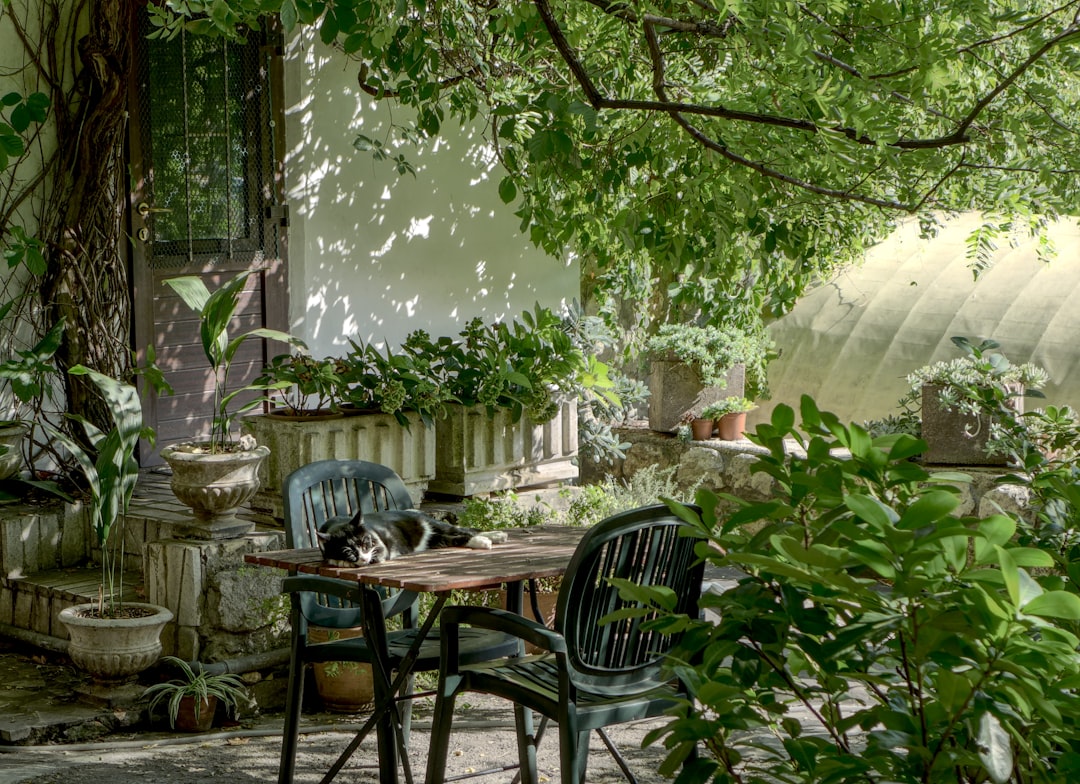Creating a well-planned container garden is about more than just placing plants in pots. A thoughtful layout can maximize space, enhance visual appeal, and create a harmonious growing environment where plants thrive together. Whether you're growing vegetables, flowers, or a mix of both, combining plants strategically ensures a garden that is both beautiful and functional.
Understanding Container Garden Design Principles
Before selecting plants, consider key design principles to achieve a visually balanced and practical arrangement:
1. Thrillers, Fillers, and Spillers
A popular technique in container gardening is using three types of plants to create depth and contrast:
-
Thrillers: Tall, eye-catching plants that serve as focal points. These plants add height and drama to a container. Examples include:
-
Ornamental grasses (e.g., fountain grass, purple millet)
-
Tall flowers (e.g., sunflowers, snapdragons, delphiniums)
-
Edible options (e.g., tomatoes, okra, peppers)
-
-
Fillers: Medium-height plants that provide bulk, texture, and visual interest. Examples include:
-
Mounding flowers (e.g., petunias, geraniums, alyssum)
-
Herbs (e.g., basil, parsley, cilantro)
-
Leafy greens (e.g., lettuce, Swiss chard, kale)
-
-
Spillers: Trailing or cascading plants that soften the edges of containers and add movement. Examples include:
-
Ivy and creeping jenny (for lush greenery)
-
Nasturtiums and sweet potato vines (for color and edible options)
-
Strawberries and trailing rosemary (for dual-purpose beauty and harvests)
-
2. Color Coordination and Texture
-
Choose a color scheme that complements your space. Options include:
-
Monochromatic: Shades of a single color (e.g., all white flowers for an elegant look).
-
Analogous: Colors next to each other on the color wheel (e.g., orange and yellow, blue and purple).
-
Complementary: Contrasting colors for a bold look (e.g., red and green, purple and yellow).
-
-
Use a mix of leaf shapes and textures for variety:
-
Large, broad leaves (e.g., hostas, elephant ears) contrast well with fine, feathery foliage (e.g., ferns, asparagus fern).
-
Glossy-leaved plants (e.g., pothos, peace lily) add depth when paired with matte-finished foliage (e.g., dusty miller, lamb’s ear).
-
3. Functional Plant Pairings
-
Companion planting helps improve growth and reduce pests:
-
Basil enhances the flavor of tomatoes and repels aphids.
-
Marigolds deter nematodes and pests in vegetable gardens.
-
Chives repel aphids and add ornamental appeal.
-
-
Mixing flowers and vegetables promotes biodiversity and boosts pollination:
-
Zinnias attract butterflies and bees, benefiting cucumbers and squash.
-
Lavender and mint deter pests while adding fragrance.
-
-
Water and sunlight compatibility is key:
-
Pair drought-tolerant plants together (e.g., succulents with lavender).
-
Keep moisture-loving plants together (e.g., ferns with impatiens).
-
Arranging Your Container Garden
1. Vertical Gardening for Small Spaces
If you have limited space, make use of vertical elements:
-
Hanging baskets for trailing herbs, flowers, and strawberries.
-
Trellises and stakes for climbing plants like peas, beans, cucumbers, and passionflower.
-
Tiered plant stands for layering different heights and maximizing growing space.
-
Wall-mounted planters for herbs and compact greens.
2. Grouping Containers for Impact
-
Cluster containers of varying heights for a layered effect.
-
Arrange pots with similar colors or materials for a cohesive look.
-
Place larger containers in the back and smaller ones in front for better visibility and access.
-
Use wheeled stands for heavy pots to make rearranging easy.
3. Designing for Accessibility
-
Place frequently used herbs or vegetables within arm’s reach.
-
Ensure there’s enough space for watering and maintenance.
-
Use raised containers to reduce bending and improve accessibility for those with mobility issues.
Best Plant Combinations for Beauty and Function
Edible and Ornamental Mix
-
Tomatoes + Marigolds + Basil (attracts pollinators and deters pests while adding color)
-
Kale + Pansies + Thyme (cool-season garden with beauty and culinary benefits)
-
Strawberries + Chives + Nasturtiums (trailing beauty with pest control advantages)
Low-Maintenance Arrangements
-
Succulents + Lavender + Ornamental Grasses (drought-tolerant, visually interesting, and fragrant)
-
Snake Plant + Pothos + Peace Lily (ideal for indoor low-light conditions, purifying air and requiring minimal care)
-
Geraniums + Dusty Miller + Sweet Potato Vine (easy-care plants that add contrast and color to outdoor spaces)
Pollinator-Friendly Garden
-
Zinnias + Coneflowers + Salvia (attracts bees and butterflies for improved fruit and vegetable yields)
-
Mint + Sunflowers + Echinacea (provides nectar sources while repelling pests like mosquitoes)
-
Cosmos + Lavender + Bee Balm (aesthetically pleasing and great for beneficial insects)
Shade-Tolerant Combinations
-
Hostas + Ferns + Impatiens (lush foliage with pops of color)
-
Begonias + Caladiums + Coleus (vibrant foliage and flowers that brighten shaded patios)
-
Snake Plant + ZZ Plant + Peace Lily (indoor options that thrive in low light)
Final Tips for a Successful Container Garden Layout
-
Use high-quality potting soil for better drainage and plant health.
-
Match plant needs for light, water, and soil type to avoid maintenance challenges.
-
Rotate plant groupings seasonally to keep the garden looking fresh and productive.
-
Incorporate decorative elements like stones, small statues, or fairy lights for added charm.
Conclusion
A well-planned container garden blends functionality with beauty, making the most of available space while creating a thriving plant ecosystem. By carefully selecting plants based on their growth habits, color coordination, and practical benefits, you can design a stunning and productive garden that suits your needs and style. Whether you’re gardening on a balcony, patio, or backyard, thoughtful planning ensures long-term success and enjoyment. With the right combination of plants and a strategic layout, you can create a container garden that is not only visually appealing but also productive and easy to maintain.

Comments
No comments yet. Be the first to comment!
You must be logged in to comment. Login